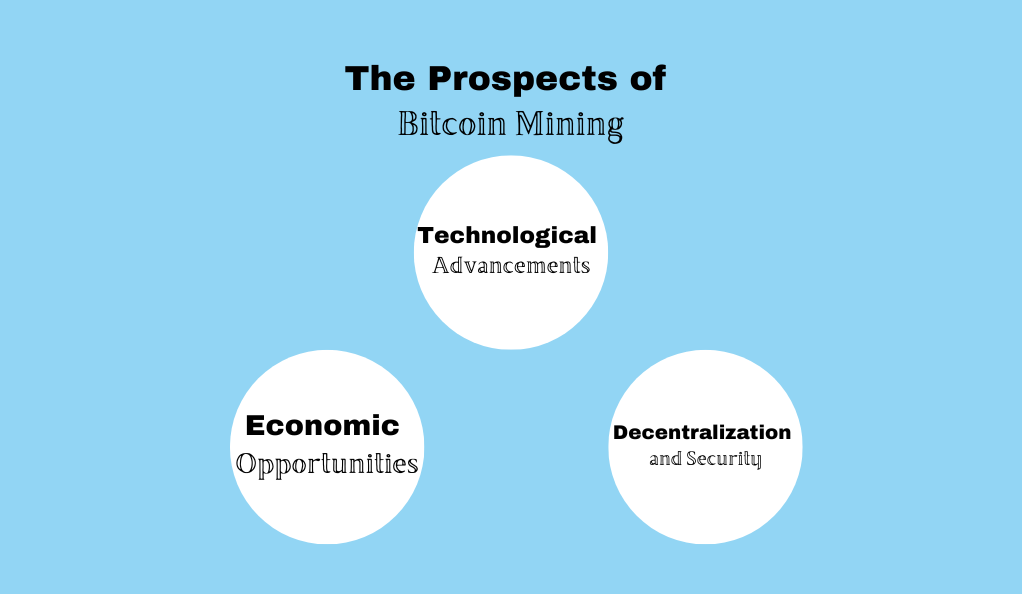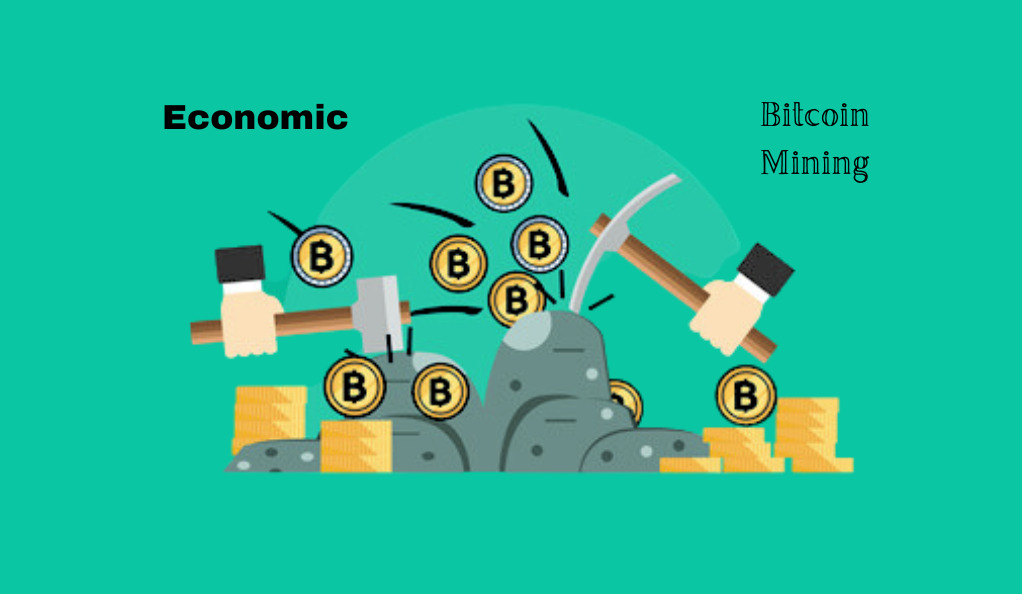Bitcoin, the world’s premier cryptocurrency, has witnessed an astronomical rise since its inception in 2009. Central to its existence and functionality is the process known as ‘mining’. As we venture into 2023, Bitcoin mining continues to evolve, presenting both promising prospects and formidable challenges. This introduction aims to provide a comprehensive overview of the current landscape of Bitcoin mining, diving deep into its intricacies.
What is Bitcoin Mining?
Bitcoin mining is the decentralized computational process that confirms and adds transactions to the public ledger called the blockchain. Miners use powerful computers to solve complex mathematical problems, and upon solving them, they are rewarded with newly minted Bitcoins. This not only issues new Bitcoins at a controlled and diminishing rate but also secures the network and verifies transactions.
Evolution of Bitcoin Mining Rewards
| Year | Block Reward | Total Bitcoins Mined |
|---|---|---|
| 2009 | 50 BTC | 1,800,000 BTC |
| 2012 | 25 BTC | 2,625,000 BTC |
| 2016 | 12.5 BTC | 2,812,500 BTC |
| 2020 | 6.25 BTC | 2,906,250 BTC |
The Prospects of Bitcoin Mining
The future of Bitcoin mining is rife with potential:

- Technological Advancements: As technology evolves, so does the efficiency and power of mining equipment. Advanced ASIC (Application-Specific Integrated Circuit) miners have made the process faster and more energy-efficient.
- Economic Opportunities: With the increasing value of Bitcoin, mining can be a lucrative venture for those with the right resources and expertise. It also creates job opportunities in related sectors like hardware manufacturing and energy.
- Decentralization and Security: As more individuals and entities participate in mining, the Bitcoin network becomes more decentralized, reducing the risk of attacks and ensuring its integrity.
The Challenges of Bitcoin Mining
However, the path is not without its hurdles:
- Environmental Concerns: Bitcoin mining consumes vast amounts of electricity. The carbon footprint and the strain on power grids have raised environmental concerns worldwide.
- Regulatory Hurdles: Many countries are skeptical about cryptocurrencies, leading to regulatory challenges for miners. Some regions have even banned mining activities.
- Economic Viability: As the block reward diminishes and competition increases, the profitability of mining can be at risk, especially for individual miners.
Comparison Table: Mining Profitability Over the Years
| Year | Average Cost to Mine 1 BTC | Average BTC Price | Profitability |
|---|---|---|---|
| 2016 | $500 | $650 | Profitable |
| 2018 | $6,500 | $6,000 | Break-even |
| 2020 | $9,000 | $10,000 | Profitable |
| 2023 | $15,000 (estimated) | TBD | TBD |
The Booming Bitcoin Mining Landscape in Texas
In recent years, Texas has emerged as a significant hub for Bitcoin mining, drawing miners from across the globe to its vast landscapes. The state’s unique combination of factors, from its energy policies to its entrepreneurial spirit, has positioned it at the forefront of the Bitcoin mining revolution. This article delves deep into the booming Bitcoin mining landscape in Texas, exploring the reasons behind its rise and its implications for the future.
Why Texas?
Several factors have contributed to Texas becoming a hotspot for Bitcoin miners:
- Abundant Energy Resources: Texas is rich in energy resources, especially natural gas and wind energy. This abundance ensures a steady supply of electricity, crucial for mining operations.
- Competitive Electricity Rates: The state’s deregulated electricity market allows miners to negotiate better deals, making the cost of mining more economical.
- Favorable Climate: While Texas does have hot summers, its cooler nights and winters can help offset the cooling costs associated with large-scale mining operations.
The Energy Mix: Renewable vs. Non-renewable
Texas’s energy landscape is diverse, and this diversity plays a significant role in attracting Bitcoin miners.
Table 1: Texas Energy Production Breakdown (2022)
| Energy Source | Percentage of Total Production |
|---|---|
| Natural Gas | 45% |
| Wind Energy | 25% |
| Coal | 20% |
| Solar | 8% |
| Others | 2% |
The increasing share of wind and solar energy in Texas’s energy mix is particularly appealing to miners concerned about the environmental impact of their operations.
Regulatory Environment
Texas’s regulatory environment is another significant draw for Bitcoin miners:
- Pro-Business Stance: Texas has a long-standing reputation for supporting businesses, and this extends to the cryptocurrency sector. The state government’s welcoming attitude has encouraged many mining companies to set up shop.
- Innovative Energy Policies: Texas’s grid operator, ERCOT, allows for more flexibility in electricity usage, especially during times of excess production. This can lead to periods where electricity prices are exceptionally low, or even negative, a boon for miners.
Economic Impact
The surge in Bitcoin mining operations in Texas has brought about significant economic repercussions. One of the most evident outcomes is job creation. These mining endeavors have not only generated positions directly related to mining but have also spurred employment opportunities in ancillary sectors such as hardware maintenance, security, and logistics. Furthermore, the demand for sturdy infrastructure, ranging from well-maintained roads to state-of-the-art data centers, has catalyzed heightened investment in local communities. This influx of businesses and subsequent investments have also been a boon for local and state governments, leading to a boost in tax revenues.
Challenges and Criticisms
Despite the boom, there are challenges:
- Strain on the Power Grid: The massive energy consumption of mining operations, especially during peak periods, can strain the state’s power grid.
- Environmental Concerns: While Texas has a growing renewable energy sector, much of the electricity used in mining still comes from fossil fuels, raising environmental concerns.
The Mounting Challenges in Bitcoin Mining
Bitcoin mining, once seen as a lucrative venture for tech enthusiasts with a computer, has evolved into a complex industry facing a myriad of challenges. As the Bitcoin network grows and the world becomes more environmentally conscious, miners are grappling with obstacles that threaten the very essence of their operations. This article delves deep into the mounting challenges in Bitcoin mining, shedding light on the issues that miners confront in today’s dynamic landscape.
Environmental Concerns
One of the most prominent challenges facing Bitcoin mining is its environmental impact:
- High Energy Consumption: Mining requires vast amounts of computational power, leading to significant electricity consumption. Large-scale mining farms operate 24/7, consuming as much energy as entire cities in some cases.
- Carbon Footprint: While some mining operations use renewable energy, a significant portion still relies on fossil fuels. This dependence results in substantial carbon emissions, contributing to global warming.
Diminishing Returns
The Bitcoin protocol is designed to reduce the mining reward by half approximately every four years in an event known as the “halving.”
Table 1: Bitcoin Halving and Its Impact on Miners
| Year | Block Reward | Impact on Miners |
|---|---|---|
| 2009 | 50 BTC | High profitability |
| 2012 | 25 BTC | Reduced earnings |
| 2016 | 12.5 BTC | Further squeeze on profits |
| 2020 | 6.25 BTC | Increased reliance on transaction fees |
As the block reward diminishes, miners must rely more on transaction fees, making the venture less profitable, especially when Bitcoin’s price is volatile.
Increased Competition
The lucrative nature of Bitcoin mining has attracted a plethora of players:
- Rise of Mining Pools: Individual miners now compete with large mining pools that combine the computational power of thousands of machines. These pools have a higher chance of solving the mathematical puzzles and earning the block reward.
- Geopolitical Concentration: A significant portion of Bitcoin mining is concentrated in specific regions, leading to centralization concerns. This concentration can make the network vulnerable to localized disruptions or regulatory crackdowns.
Regulatory and Legal Hurdles
Governments across the globe are actively wrestling with the multifaceted implications of cryptocurrencies. A number of nations, driven by worries over potential illicit undertakings or threats to financial stability, have chosen to impose bans or place stringent restrictions on mining activities. Concurrently, in numerous jurisdictions, miners are navigating a sea of ambiguity, particularly concerning the tax implications tied to their earnings and operations.
Technological Challenges
As the Bitcoin network grows, so does the complexity of the mathematical problems:
- Need for Advanced Hardware: The increasing difficulty level necessitates more powerful and efficient hardware, leading to higher capital expenditures.
- Obsolescence: Mining equipment can become obsolete quickly, requiring miners to continually invest in newer technology to remain competitive.
Security Concerns
With the surge in Bitcoin’s value, mining operations have increasingly become prime targets. Mining pools, particularly those that control a substantial segment of the network’s hash rate, are susceptible to various attacks, the 51% attack being a notable example. Additionally, large-scale mining farms are confronted with pressing challenges related to physical security, including potential theft, vandalism, and other related threats.
Technological Advancements in Mining
Mining, both in the context of cryptocurrencies and traditional resources, has undergone a transformative journey over the years. Technological advancements have reshaped the industry, making operations more efficient, sustainable, and safer. This article delves deep into the innovations that have revolutionized the mining sector.
Evolution in Hardware
The progression in mining hardware has been nothing short of remarkable:

- From CPU to GPU: Initially, mining operations, especially in the cryptocurrency realm, depended on Central Processing Units (CPUs). However, the need for more computational power led to the adoption of Graphics Processing Units (GPUs), which offer faster processing for mining algorithms.
- Rise of ASICs: Application-Specific Integrated Circuits (ASICs) marked a significant leap. These are chips designed specifically for mining purposes, offering unparalleled efficiency and speed.
Table 1: Evolution of Mining Hardware
| Hardware Type | Efficiency | Power Consumption | Use Case |
|---|---|---|---|
| CPU | Low | High | Early Bitcoin mining |
| GPU | Moderate | Moderate | Advanced crypto mining, graphics |
| ASIC | High | Low | Specialized crypto mining |
Automation and Robotics
In traditional mining:
- Automated Drilling and Tunneling: Robots and automated machinery now handle tasks like drilling and tunneling, reducing human involvement in high-risk areas.
- Remote Operations: Advanced communication tools allow operators to control machinery from remote locations, ensuring safety and precision.
Real-time Data Analysis
The fusion of sensors with the Internet of Things (IoT) in mining equipment has ushered in a new era of real-time data acquisition. This integration facilitates predictive maintenance, bolsters safety monitoring, and enhances operational efficiency. Complementing this, the advent of Artificial Intelligence (AI) and Machine Learning offers the capability to sift through and analyze expansive datasets. These advanced technologies are instrumental in forecasting equipment malfunctions, fine-tuning mining operations, and even anticipating market trends.
Sustainable Mining Practices
- Eco-friendly Equipment: New machinery is designed to reduce carbon emissions and be energy efficient.
- Water Reuse Systems: Advanced filtration systems allow mining operations to reuse water, reducing wastage and environmental impact.
Enhanced Safety Measures
In the realm of mining, technological advancements are making significant strides in ensuring safety and efficiency. Miners are now equipped with wearable devices that continuously monitor their vital signs, detect the presence of hazardous gases, and, in dire situations, transmit distress signals. Complementing this, Virtual Reality (VR) has carved a niche for itself in the sector. It’s predominantly utilized for training purposes, enabling miners to immerse themselves in simulated environments where they can encounter and navigate potential hazards, all within the confines of a controlled and safe setting.
Blockchain in Traditional Mining
- Supply Chain Tracking: Blockchain technology is being used to track the journey of minerals from mines to markets, ensuring ethical practices and transparency.
- Smart Contracts: These automate and streamline transactions, reducing paperwork and potential disputes.
Economic Implications of Bitcoin Mining
Bitcoin mining, once a niche hobby for tech enthusiasts, has burgeoned into a significant economic activity with far-reaching implications. As the Bitcoin network has expanded and the value of the cryptocurrency has soared, the economic landscape surrounding its mining operations has become increasingly intricate. This article delves deep into the multifaceted economic implications of Bitcoin mining.

Direct Economic Benefits
Bitcoin mining has led to several direct economic advantages:
- Job Creation: The rise of mining farms and associated businesses has led to the creation of numerous jobs, ranging from technical roles like hardware engineers to administrative and logistical positions.
- Stimulating Local Economies: Mining operations, especially large-scale ones, often lead to increased local spending, benefiting businesses in the vicinity of mining farms.
Investment in Infrastructure
The intricate infrastructure requirements of mining operations have catalyzed substantial investments in various domains. One of the most prominent developments is the rise of state-of-the-art data centers, designed to offer secure, efficient, and cool environments tailored to the needs of mining. Parallel to this, the dual challenges of soaring electricity expenses and growing environmental apprehensions have driven many mining entities to either invest directly in renewable energy initiatives or forge partnerships with existing renewable energy projects.
Market Dynamics and Volatility
Bitcoin mining has a direct impact on market dynamics:
- Supply and Demand: The rate at which new Bitcoins are mined and introduced to the market can influence its price, especially given the capped supply of 21 million coins.
- Sell Pressure: Miners often sell a portion of their rewards to cover operational costs, which can introduce significant sell pressure in the market.
Geopolitical Implications
The widespread distribution of mining operations across the globe carries with it profound geopolitical implications. A notable concern arises from the concentration of a substantial fraction of these operations within certain regions. This clustering has sparked apprehensions regarding centralization and the looming threat of market manipulation. Concurrently, nations have exhibited a spectrum of regulatory reactions to Bitcoin mining. These responses span from endorsing and supportive stances to complete prohibitions, each shaped by a confluence of economic, environmental, and political considerations.
Environmental Costs and Economic Trade-offs
The environmental impact of Bitcoin mining has economic repercussions:
- Energy Consumption: High electricity consumption translates to substantial bills, making the choice of location (based on energy prices) crucial for profitability.
- Carbon Taxes and Penalties: In regions with stringent environmental regulations, miners might face additional costs in the form of carbon taxes or penalties for high emissions.
Evolution of Mining Profitability
The profitability of mining operations has seen fluctuations:
- Halving Events: The periodic halving of block rewards (approximately every four years) affects miners’ revenues, often leading to a squeeze on less efficient operations.
- Rising Operational Costs: As the Bitcoin network grows in complexity, the costs associated with mining (hardware, energy, maintenance) have also risen.
The Global Perspective: Mining Beyond the U.S.
While the U.S., particularly Texas, has become a significant hub for Bitcoin mining, the global landscape of this activity is vast and varied. Different countries offer unique opportunities and challenges for miners, shaped by their regulatory environments, energy costs, and technological infrastructures. This article delves deep into the Bitcoin mining scenario from a global perspective, highlighting the major players and the dynamics at play.
China: The Former Titan
For years, China dominated the Bitcoin mining industry:
- Massive Operations: At its peak, China was responsible for over 65% of the global Bitcoin hash rate, thanks to its large-scale mining farms.
- Affordable Electricity: Regions like Sichuan, with abundant hydroelectric power, offered miners cheap electricity, enhancing profitability.
- Shift in Stance: However, in 2021, China clamped down on cryptocurrency mining, leading to the closure of numerous mining farms and a significant redistribution of the global hash rate.
Russia: A Growing Player
Russia, with its expansive landmass and abundant energy resources, is emerging as a formidable player in the mining landscape. Regions such as Siberia, characterized by its chilly climate and cost-effective electricity, are increasingly drawing the attention of miners. However, while there’s palpable enthusiasm at the grassroots level, the overarching sentiment is tinged with caution. This caution stems from the Russian government’s somewhat equivocal position on cryptocurrency and mining, which has sown seeds of uncertainty among potential investors and miners alike.
Kazakhstan: The Emerging Destination
Kazakhstan has been gaining traction in the mining community:
- Welcoming Policies: The country has shown a more open approach to cryptocurrency mining, attracting miners, especially those relocating from China.
- Energy Concerns: However, the increased mining activity has raised concerns about its impact on the national power grid.
Canada: The Northern Attraction
Canada, with its chilly climate and forward-thinking approach to technology, has emerged as an attractive destination for Bitcoin mining. Particularly in provinces like Quebec, the availability of abundant hydroelectric power has transformed them into prominent hubs for mining activities. However, while there’s a clear inclination towards supporting technological innovation, Canada also treads cautiously due to concerns about the environmental impact of such operations. This has led to a nuanced regulatory environment, striking a balance between fostering growth and ensuring sustainability.
Iran: Controversial Mining Activities
Iran’s entry into the Bitcoin mining scene has been marked by controversy:
- State-sanctioned Mining: Facing economic sanctions, the Iranian government has turned to Bitcoin mining as a potential revenue source.
- Power Outages: The surge in mining activities has, at times, led to power outages, sparking public outcry and leading to intermittent crackdowns on illegal mining operations.
Europe: A Mixed Bag
The European continent presents a multifaceted landscape for mining activities. Particularly, the Nordic countries stand out in this domain. Nations such as Iceland, endowed with abundant geothermal energy and naturally cold climates, emerge as ideal environments for mining operations. However, on the regulatory front, there’s a tapestry of approaches. The European Union, while actively engaged in the discourse, is yet to crystallize a unified stance on cryptocurrency mining. This ongoing deliberation has resulted in a spectrum of approaches and policies among its member states.
The Future of Cryptocurrency Mining
Cryptocurrency mining, a cornerstone of the decentralized digital currency ecosystem, has undergone significant evolution since the inception of Bitcoin in 2009. As we stand on the cusp of a new era in technology and finance, the future of cryptocurrency mining presents a blend of challenges and opportunities. This article delves into the prospective landscape of this pivotal activity.
Technological Evolution
The heart of mining lies in its technology:
- Quantum Computing: The advent of quantum computers could drastically reduce the time required to solve cryptographic puzzles, potentially revolutionizing the mining process. However, it also poses security threats, necessitating new cryptographic algorithms.
- Energy-Efficient Hardware: As environmental concerns mount, the development of energy-efficient ASICs and GPUs will become paramount.
Green Mining: The Sustainable Shift

The environmental ramifications of mining have emerged as a topic of urgent deliberation. Looking ahead, it’s anticipated that future mining farms will lean heavily towards harnessing renewable energy sources, such as solar, wind, and hydroelectric power, as their primary means of operation. Complementing this shift, there’s a burgeoning interest in pioneering solutions like heat recovery systems. By repurposing the heat produced during mining activities for alternative uses, these systems present a promising avenue to further diminish the overall carbon footprint of the industry.
Economic Dynamics
The profitability and economic viability of mining will undergo shifts:
- Block Rewards and Transaction Fees: As more cryptocurrencies reach their supply cap, miners will rely more on transaction fees. This shift could change the economic incentives for miners.
- Decentralized Finance (DeFi): The rise of DeFi platforms might offer miners new avenues for revenue, such as staking, which could complement traditional mining.
Regulatory Landscape
Government policies will play a pivotal role:
- Stricter Regulations: As cryptocurrencies gain mainstream adoption, governments might implement stricter regulations, impacting where and how mining operations are conducted.
- Taxation Policies: Clear taxation guidelines for mining rewards and transactions will influence the profitability and operational strategies of miners.
Geopolitical Considerations
Mining’s global landscape will continue to evolve:
- Migration of Mining Farms: Due to regulatory changes or energy costs, mining operations might migrate to regions offering more favorable conditions.
- National Cryptocurrencies: The introduction of state-backed digital currencies might influence the mining landscape, either offering new opportunities or creating competition.
Security Enhancements
As technological advancements continue to reshape the landscape, they also usher in novel threats. One such peril is the ‘51% Attack.’ Historical instances have shown that larger mining pools, by controlling substantial segments of a network’s hash rate, can render it susceptible to vulnerabilities. Addressing this in the future might entail changes at the protocol level to thwart such attacks. Concurrently, as the value of cryptocurrencies escalates, mining operations find themselves in the crosshairs of intricate cyber-attacks. This evolving threat landscape underscores the imperative for integrating advanced security measures to safeguard these operations.
Conclusion
As the cryptocurrency mining landscape evolves, it stands at the intersection of innovation, economic shifts, regulatory dynamics, and environmental imperatives. The future promises both challenges and opportunities, shaped by technological advancements, governmental policies, and market forces. While uncertainties remain, the resilience and adaptability of the mining industry signal a transformative and promising trajectory in the ever-evolving world of digital currencies.
At axerunners.com, our goal is to furnish well-rounded and trustworthy information regarding cryptocurrency, finance, trading, and stocks. Nonetheless, we avoid providing financial advice and instead encourage users to conduct their own research and meticulous verification.
Read More











+ There are no comments
Add yours